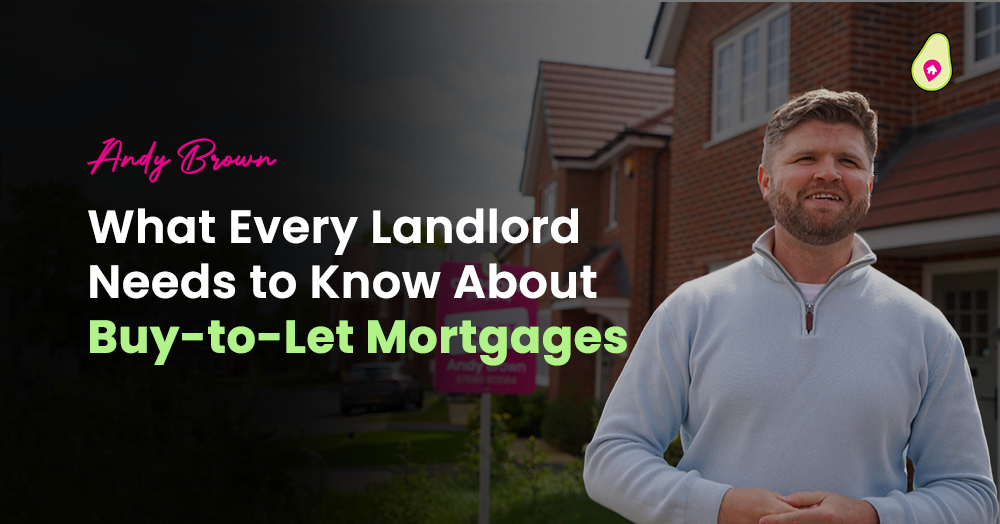
Understanding Buy-to-Let Mortgages | What Landlords Need to Know
Navigating buy-to-let mortgages can be complex, but understanding the basics is key to maximising your rental income. Our Lettings Director, Andy Brown, provides essential tips.
Navigating the world of buy-to-let mortgages can seem daunting, especially for new landlords. As a Lettings Director with years of experience, I’ve helped many property investors secure the right mortgage to maximise their rental income. Here’s my friendly and informative guide to understanding buy-to-let mortgages in the UK.
1. What is a Buy-to-Let Mortgage?
A buy-to-let mortgage is specifically designed for properties that are intended to be rented out. Unlike residential mortgages, buy-to-let mortgages are assessed on the potential rental income of the property, rather than the borrower’s personal income. Understanding this distinction is crucial for any prospective landlord.
2. The Deposit: Higher Stakes
Buy-to-let mortgages typically require a larger deposit than residential mortgages. Expect to put down at least 25% of the property’s value, though some lenders may require more. This higher deposit reduces the lender’s risk and ensures you’re committed to the investment. In my experience, having a substantial deposit can also secure better mortgage rates.
3. Interest Rates: Fixed vs. Variable
Interest rates on buy-to-let mortgages can be either fixed or variable. Fixed rates provide stability, with consistent monthly payments over a set period, while variable rates can fluctuate with the market. Choosing the right type depends on your risk tolerance and financial planning. Personally, I often recommend fixed rates for new landlords to avoid surprises.
4. Affordability: Rental Income and Stress Tests
Lenders assess the affordability of a buy-to-let mortgage based on the expected rental income. Typically, the rental income needs to be 125-145% of the mortgage repayments. Lenders also perform stress tests to ensure you can handle interest rate increases. It’s essential to have realistic rental income projections to meet these criteria.
5. Tax Implications: Plan Ahead
Buy-to-let properties have specific tax implications. Rental income is subject to income tax, and you’ll also need to consider capital gains tax if you sell the property. Recent changes to mortgage interest tax relief mean you can no longer deduct all mortgage interest from your rental income. Instead, you receive a tax credit based on 20% of the interest payments. Understanding these tax implications is vital for effective financial planning.
6. Types of Buy-to-Let Mortgages: Understanding Your Options
There are various types of buy-to-let mortgages available, including:
- Repayment Mortgages: You repay both the interest and the capital, gradually reducing the loan amount.
- Interest-Only Mortgages: You only pay the interest each month, with the loan amount due at the end of the term. This keeps monthly payments lower but requires a plan to repay the capital.
- Tracker Mortgages: These follow the Bank of England’s base rate plus a set percentage, meaning your payments can vary.
Choosing the right type depends on your investment strategy and financial goals.
7. Lender Requirements: What They Look For
Lenders typically require:
- A minimum income: Some lenders have a minimum personal income requirement, often around £25,000.
- Good credit history: A solid credit score improves your chances of approval and better rates.
- Property type: Some lenders have restrictions on the types of property they’ll finance, such as flats above commercial premises or ex-local authority properties.
Meeting these requirements is essential to secure a favourable mortgage.
8. Buy-to-Let Mortgage Fees: Factor Them In
Be aware of the various fees associated with buy-to-let mortgages, including arrangement fees, valuation fees, and legal costs. These can add up, so it’s important to factor them into your budgeting. My experience has shown that understanding all potential costs upfront can prevent financial surprises later.
9. Portfolio Landlords: Special Considerations
If you own multiple rental properties, you’re considered a portfolio landlord. Lenders may have additional requirements and scrutiny for portfolio landlords, such as detailed business plans and financial forecasts. Managing multiple properties requires more sophisticated financial management, and lenders want to ensure you can handle the complexity.
10. Professional Advice: Don’t Go It Alone
Navigating buy-to-let mortgages can be complex, and professional advice can be invaluable. Mortgage brokers specialising in buy-to-let can help you find the best deals and navigate the application process. Over the years, I’ve seen firsthand how professional advice can save money and streamline the mortgage process.
By understanding the ins and outs of buy-to-let mortgages, you can make informed decisions that maximise your investment potential. But if navigating this complex landscape feels overwhelming, I’m here to help. I can put you in touch with the right broker to secure the right mortgage and managing your rental properties profitably. Give me a call or drop me a whatsapp.